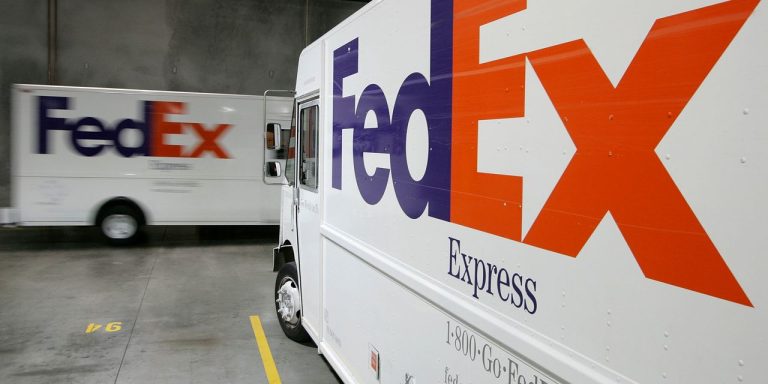How FedEx Corp. performed in its fiscal first quarter could have a lot to do with some bad things that happened to a couple of the package delivery company’s competitors.
“[FedEx] was almost certainly a beneficiary of two meaningful events that unfolded within the three months of F1Q24, namely the labor negotiations of its closest peer, which led to market-share shifts right up to the 11th hour, and the bankruptcy/liquidation of one of the largest competitors to FedEx Freight, which also likely supported both volumes and pricing in that segment,” wrote Evercore ISI analyst Jonathan Chappell in a note to clients.
When FedEx
FDX,
reported fiscal fourth-quarter results in June, the company said contract negotiations between its closest peer, United Parcel Service Inc.
UPS,
and the Teamsters union had “opened a lot of doors” for it to gain market share.
And when UPS reported second-quarter results last month, the company said it experienced more volume diversion than expected, as negotiations leading up to a tentative agreement grew “late and loud.”
Also in August, trucking company Yellow Corp. declared bankruptcy. Citi analyst Christian Wetherbee said last week that FedEx likely benefited in terms of increased volume after Yellow’s closure during the quarter, while BofA Securities analyst Ken Hoexter said Yellow’s exit also likely led to higher pricing and improved margins.
That doesn’t necessarily mean FedEx will snap its quarterly streak of revenue misses, given what the company has called a “muted demand environment,” as inflation, rising interest rates and a slowdown in global trade have acted as a headwind for volumes.
FedEx is slated to report results for the quarter through August on Wednesday, after the closing bell.
The company has beat the FactSet consensus for earnings per share the past three quarters, but has missed revenue projections for the past five quarters. Among FedEx’s businesses, its Express business has missed revenue expectations the past six quarters, while Ground and Freight have missed the past three quarters.
“While we see Express upside from market-share gains, the combined headwinds from muted China activity, moderating fuel, increased airfreight capacity and soft economic backdrop may offset the benefits and weigh on volume and pricing outlook,” BofA’s Hoexter wrote in a note to clients.
But as Evercore’s Chappell said, as important as first-quarter results will be, as the company looks to build a track record of meeting or beating expectations, “the full-year guide will matter the most.”
The company’s fiscal 2024 guidance for adjusted earnings per share provided in June was $16.50 to $18.50, which Chappell said was purposely wide given the macroeconomic uncertainty.
Here is what FedEx is expected to report for its first quarter, according to a FactSet survey of analysts:
- EPS, excluding nonrecurring items, of $3.71, up from $3.44 in the same period a year ago. That consensus has increased from an average estimate of $3.68 as of the end of August, but has slipped from an estimate of $3.73 at the end of June.
- Total revenue of $21.74 billion, down from $23.20 billion a year ago. The expectation has slipped from $21.77 billion as of the end of August, and from $21.79 billion at the end of June.
- FedEx Express revenue is expected to be $10.26 billion, down from $11.13 billion last year.
- FedEx Ground revenue is expected to edge up to $8.17 billion from $8.16 billion a year ago.
- FedEx Freight revenue is expected to decline 14.5% to $2.33 billion, from last year’s $2.17 billion.
FedEx’s results come as the stock has outperformed its closet peer and the broader stock market in recent months.
FedEx’s stock has gained 7.1% over the past three months while UPS shares have dropped 11.5%. In comparison, the Dow Jones Transportation Average
DJT
has tacked on 2.5% the past three months and the Dow Jones Industrial Average
DJIA
has edged up 0.6%.
Read the full article here









